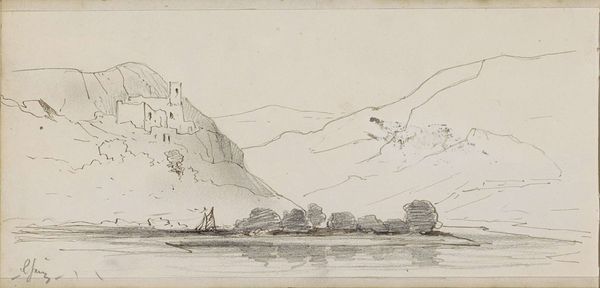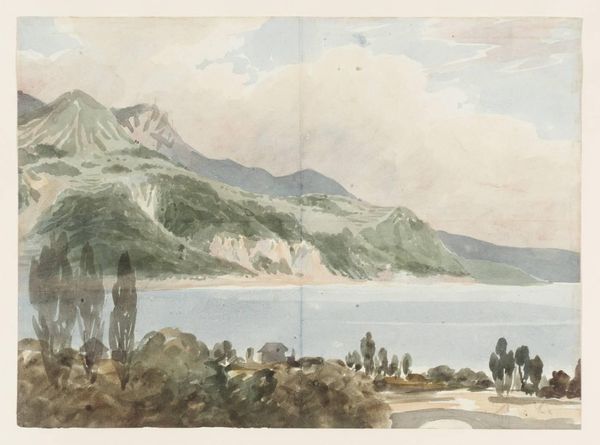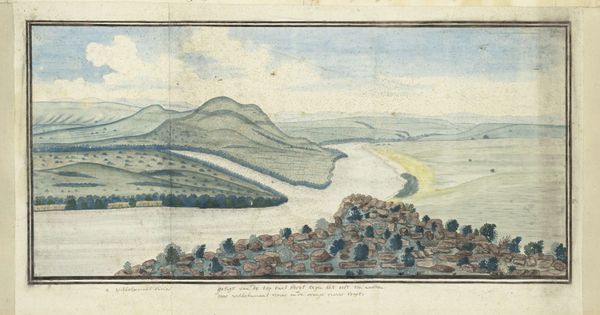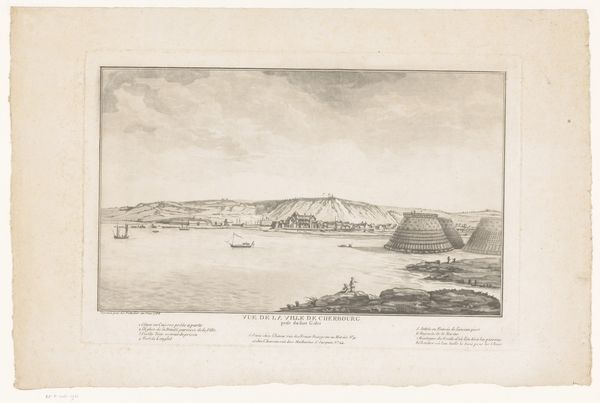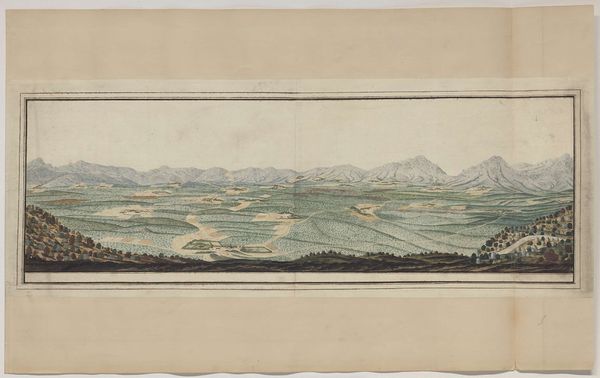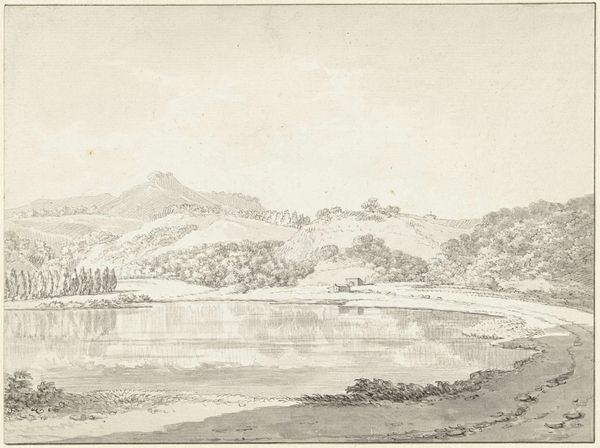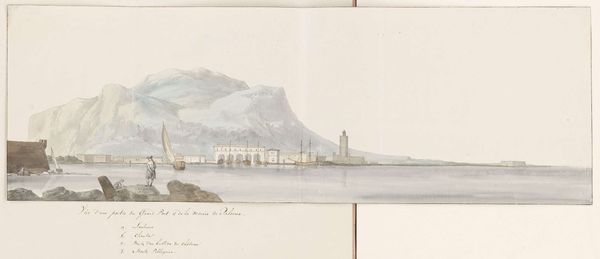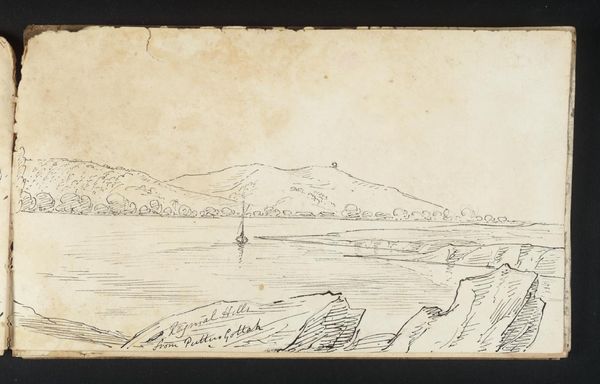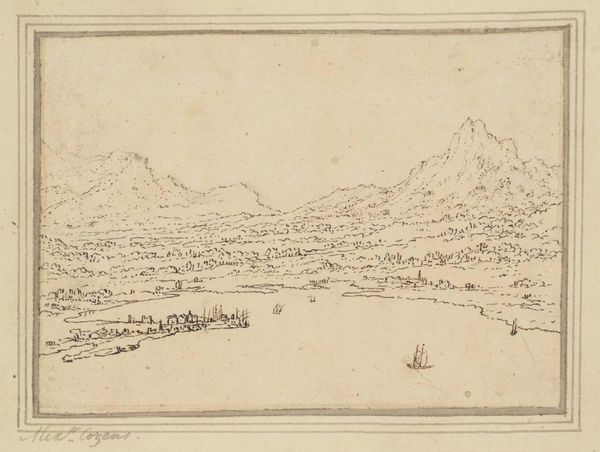
plein-air, watercolor
#
neoclacissism
#
plein-air
#
landscape
#
watercolor
#
coloured pencil
#
mountain
#
15_18th-century
#
watercolour illustration
#
watercolor
#
realism
Dimensions: height 193 mm, width 638 mm
Copyright: Rijks Museum: Open Domain
Editor: This is "De Tafelberg en Kaapstad gezien vanaf de zee," or "Table Mountain and Cape Town Seen from the Sea," created in 1787 by Jan Brandes, using watercolors. It's quite expansive, and evokes a sense of exploration and perhaps a touch of colonial ambition, rendered in very delicate colours. What do you see in this piece? Curator: I see a panorama deliberately composed to communicate power. The ships are not merely present; they signify connection, trade, and control. Notice how the mountains—Table Mountain specifically—loom large, becoming a symbol not only of geographic dominance but also of something more profound. What does the shape of Table Mountain suggest to you? Editor: I hadn’t really considered that… the mountain seems…imposing, a flat plane almost like a fortress. Is that a common reading? Curator: Precisely. Consider how landscape painting often served as propaganda. Brandes isn't just showing us a view; he's imbuing it with meaning. Table Mountain, usually unique in its flat summit, is an idealised vision, presented for a European audience. Its sheer size and peculiar form represent an unconquerable domain and its potential wealth. Look at the colours, too – do they communicate the raw climate of South Africa, or are they somehow tempered? Editor: They definitely seem softened. Less… harsh. It's a much more inviting image than I'd expect for that region. Curator: Exactly! These modifications aren't accidents. They carry deliberate intentions. The tempered landscape could serve to both inspire European imagination and alleviate any fears connected with traveling abroad, priming the colonial vision. Editor: That's fascinating. I initially saw it as just a landscape, but now I see how many layers of symbolism and cultural encoding are really present. Curator: Visual representations offer cultural memory, allowing us a lens through which to perceive history's complex narrative. A landscape can be far from neutral!
Comments
No comments
Be the first to comment and join the conversation on the ultimate creative platform.

